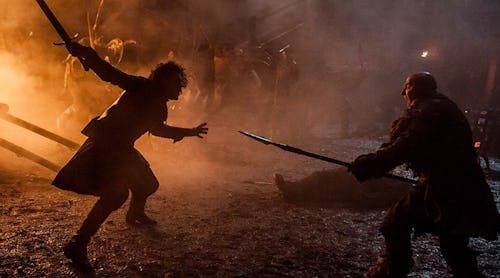
There’s a moment in “The Watchers on the Wall” when all hope seems truly lost. The Wildlings have breached Castle Black, and the Night’s Watch is just barely fighting back. Then, the tide turns. Jon Snow descends down from the top of the mighty Wall and lunges directly into the thick of the fighting as the camera shifts seamlessly into an unbroken 360-degree shot, revealing the gruesome battle playing out across the castle courtyard.
For director Neil Marshall, this was one of the toughest (and most important) shots in the entire epic Game of Thrones episode. Getting it right took careful planning.
“Each area had a number, and as the crane went around, I’d call out the specific number for each fight,” Marshall tells Inverse.
This wasn’t Marshall’s first time helming an episode of Thrones. The filmmaker behind beloved horror movies like Dog Soldiers and The Descent had previously directed “Blackwater,” the Season 2 episode where Tyrion Lannister successfully defends King’s Landing from an invading attack (with a little help from his dad, Tywin). But after establishing the template of what a Westeros battle should look like in “Blackwater,” Marshall’s return redrew the battle lines in “Watchers on the Wall.” In the penultimate episode of Game of Thrones fourth season, visceral sword fights and kinetic camera action were combined with gnarly deaths, giants, mammoths, scythes, cowards in command, and heroic bastards.
“It took four weeks of night shoots in Belfast, and it pissed down rain 90 percent of the time.”
“It’s always fascinated me to see what people are prepared to do to survive, the moments and emotions that take place in battle. It’s easy to think of battles as one-dimensional and people just killing each other, but there’s always more going on,” Marshall says.
A decade after “The Watchers on the Wall” premiered on June 8, 2014, Inverse caught up with Marshall to revisit the unforgettable episode, along with his equally impressive work in “Blackwater.” And of course, we couldn’t pass up the opportunity to ask about everything from how he came up with The Descent to the current state of his planned Dog Soldiers sequel to how he accidentally predicted Westworld’s biggest twist while directing Season 1.
This interview has been edited for brevity and clarity.
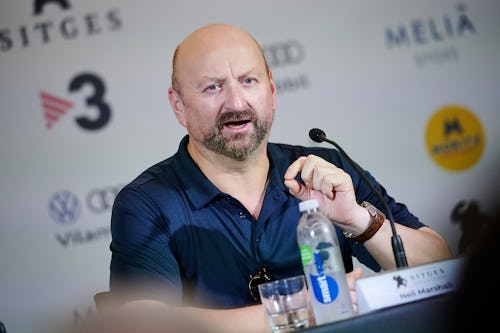
When did you get the offer to direct “The Watchers on the Wall”?
I was surprised when it came because I hadn't read the book and didn’t know what to expect. I didn’t quite realize the scale of what I was taking on, but it was a real joy to return because I had such a great experience on “Blackwater.” For the first four seasons, the episodes I directed were the only ones in a single location too.
In the book, parts of “Watchers on the Wall” took place during the day, but that changed for the show because it bought us leeway with the amount of extras we could use and improved the spectacle — flaming arrows just look better at night!
It took four weeks of night shoots in Belfast, and it pissed down rain 90 percent of the time. For “Watchers on the Wall,” we used CGI to remove the rain. Adding rain in with CGI is relatively straightforward, but taking it away is very difficult. You can’t see it though when you watch the episode. I was very impressed with that VFX work.

What was it about this episode that convinced you to do it?
Seeing the Castle Black set for the first time. I’d shot in the Magheramorne Quarry for “Blackwater,” but I never visited the Castle Black set. When you get there you realize how big it is. Walking onto Castle Black and seeing it was a 360-degree set and no gaps, meaning you could turn a camera anywhere. The most interesting place for visuals and fight choreography was not the middle ground, because it was flat and empty, but the perimeters with those ladders, walkways and steps. From this came the thought “What if we stuck a camera crane in the middle and did a big sweeping shot all the way around, taking in everything?” That grew into the idea of following each main character in the courtyard fight. None of that was scripted.
I can imagine how nervous John Bradley was in that final 360-degree shot because if he got anything wrong, it probably had to be reset. Watching the making of the episode, it looked like you were directing that shot in stages. Is that correct?
Very much so. Each fight was staged in sections and had a choreographer working with the people fighting. They each had 30 seconds worth of a fight to do, but the shot is a minute and a half long. If everybody starts an action, by the time you get around to the end, everyone’s run out of things to do. That’s why we divided it up into areas. Each area had a number, and as the crane went around, I’d call out the specific number for each fight. Kit [Harington] had the biggest responsibility because he had to start the whole thing by jumping out of an elevator, roll, get up and fight five guys. Kit’s so good with that stuff. If dexterity is being good with your hands, he’s dexterous with his feet! He's great at choreography and incredibly nimble on his feet for fighting. We got all the way around, and John Bradley was the last one. Thankfully, he didn’t trip up or bump into the furniture! In total, we spent an hour setting it up and did seven takes. It took a bit of practice, about an hour and a half to execute in total.
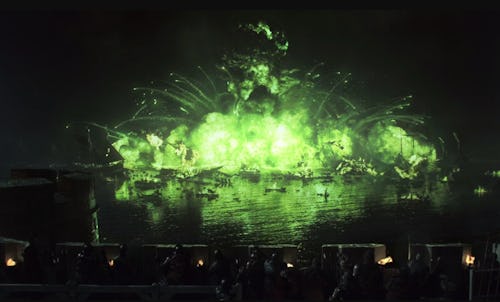
On “Blackwater,” you drew from real-life military history. Was there anything similar from history that inspired you on this episode?
The important thing for “WOTW” was when Jon and the Night’s Watch were on top of the Wall. Because it’s so high up, nobody from the ground can shoot them off. Regular bows can’t shoot that high. I suggested the Wildling giants should have bows and use them like real-life heavy artillery to reach the top of the Wall. We built these giant bows that were like spears when fired. From that came the idea “What if they skewered a guy right off the Wall and he landed in the middle of Castle Black?” That was a great way to tie every location together. So much of the choreography in any action sequence is about geography, letting the audience know where people are. Between the 360-degree shot, this impalement with the giant’s arrow, and an earlier overhead aerial shot, the audience knew where everything was. That was vitally important.
We also used mammoths as the Westeros equivalent of tanks to pull down the Wall’s gates. Those logistics were tough because for big scenes with loads of extras, the problem was ensuring people didn’t walk anywhere near the mammoth’s path. They couldn’t cross that space. We needed to create something mobile but couldn't be a vehicle because it had to look like it couldn’t move smoothly. We created a green frame with four guys in green bodysuits on each leg that matched the size and scale of a mammoth. We called this green frame the “cheese slice” because it was like a large cheese wedge on sticks!

Do you have a favorite moment or scene from the episode?
There’s a couple. One is the shot of Jon cradling Ygritte after she dies. I pushed to do a slow-mo for that, which was the first one in the show’s history. Even with people running around and the battle raging on, you’re in that moment with them. The other was setting fire to five stunt guys with a fireball. We dropped an exploding fireball, which is very dangerous and quite rare. We had three cameras covering the scene, but the shots didn’t quite work. I asked for another take but didn’t realize what a big deal that was. I’m aware it’s guys setting themselves on fire and how dangerous that is, but the stunt performers also get paid a bonus for each take, so another take costs between $10,000 [and] $20,000.
In my opinion, the scene where Grenn and the Night’s Watch “hold the gate” against the giant is the most underrated moment in the show’s history. Can you talk a bit about that scene because I know there’s some camera trickery used there.
As a director, the thing you have to watch out for is that because there is so much trickery and ways to shoot the giant in the tunnel, the performances must always be key. There are loads of different technical elements going on in that scene — we have a very tall man acting in a smaller-sized set to make him look bigger; there’s stuff with a green screen against the full-size set — but scenes can become a technical exercise. You've always got to remember that drama is the key. The technical details will take care of themselves. Focusing on performances is what sells the drama and makes it real. All the special effects in the world can’t beat the reality those actors brought. It was a big moment too because we’re killing off important characters and Mark [Stanley] (Grenn) is such a great lad too. We framed it, knew our blocking and let the lads go with it. They all had as much latitude as possible to help them get into the scene and give it 200 percent. Up on the Wall, I did a sneaky thing with Mark that wasn’t scripted. I asked him to throw in a line from The Wild Bunch, which is one of my favorite films. When he’s given his orders by Jon to go down and hold the gate, Grenn shouts, “Come on, you lazy bastards!” That’s a Wild Bunch nod because they’re going off to sacrifice themselves for the sake of their friends. That’s what the Night’s Watch lads are, they’re The Wild Bunch.
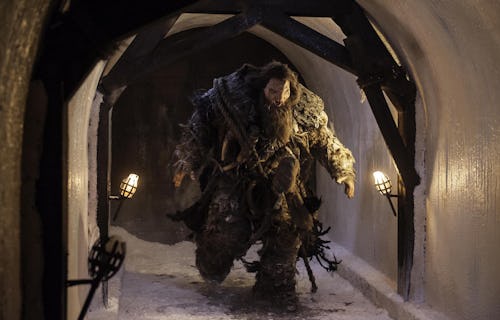
Do you have a favorite memory of making that episode?
I loved every moment, and there was a lot of good socializing in Belfast! The nights in the rain have a strange galvanizing impact too. We spent 12 to 14 hours in the rain some nights, up to our knees in mud, and it was the same on “Blackwater.” I remember looking over the castle gate and seeing all the background artists in their costumes, standing in the rain but in high spirits. They were all soaked to the bone but happy to be there. I walked through the gates and chatted with all of them. None of them were pissed off or moaning about the weather. They were just having a grand time, getting to act as soldiers. The spirit of those Belfast background artists was phenomenal. I love those guys and had my picture taken with all of them.
The scene where they drop the giant scythe was very cool. How was that executed?
Certain aspects were practical, like the mechanism that hooks it up. We did that to allow the guy to hit it with a hammer, pop and fall. Everything with the scythe swinging backwards and forwards was CG. The moment where it hits the guys on the wall and destroys them was a combination of a CG scythe and practical effects. We filled this huge air mortar with blood and blasted it against the ice wall. That got a good splash of blood which covered this 20-by-10-foot wall. We then combined it with other VFX elements where the scythe obliterated everyone.
You helped define the template of what a Game of Thrones battle sequence should be, so I’m curious if there were ever conversations about you returning to do some other episodes in later seasons because the scale of each battle only got bigger.
They offered me the “Hardhome” episode. Sadly, I had other commitments and couldn’t do it, much to my regret. That was a shame. In the script I read, the battle sequence at the end of “Hardhome” was quite small. By the time they shot it though, it blew up into this huge zombie onslaught. That battle was incredible to see. Miguel Sapochnik directed it and he called me for some advice about how to do these large battle sequences. We had a long chat. Unfortunately for me, when it came to the “Battle of the Bastards,” they went to him instead. Maybe I lost my place in line!
For me, you’ve directed one of the absolute best Jon Snow-centric episodes. I see the spinoff show for Jon is on hiatus because they can’t develop a strong enough idea. If you were developing that show, what would you like to see with Jon?
That's tricky. The big thing now is that TV companies want to do prequel stories on the basis that if you watch the prequel, you’re more likely to watch the thing that follows it. Whereas if you make a sequel, you’re less likely to go and watch the show that preceded it. I don’t fully buy that logic, but that’s the way executives think. With Jon, is there an earlier chapter of his life that we’ve missed? Some quest he went on? Did he go looking for his parents? Maybe there’s something to be told about a quest he went on as a younger man? The trouble with that is if they do make a show with a younger Jon, it can’t be with Kit, and if it’s not Kit, it’s not Jon Snow. It has to be Kit. Jon always felt more at home in Castle Black and beyond the Wall too. I'd love to see what happened to him next, rather than see what happened earlier. I’d rather see Kit go on a new adventure, maybe it should be something to do with his true lineage. There could be something to be developed there.
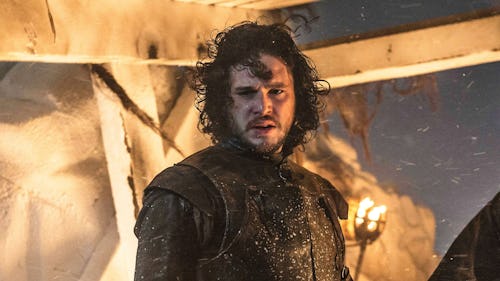
You’re one of the few directors on Thrones who adapted a George R.R. Martin screenplay. What was his reaction to Blackwater?
George was lovely, extremely complimentary and very proud of that episode. To direct one of his episodes was astonishing. In fact, he showed his gratitude after he won the Hugo Award for Best Dramatic Presentation. He gave me that award which was unbelievably nice of him. He's a top bloke. Sitting with him on set and talking in the production office was just like talking to a fellow nerd. He's a full-on nerdy guy but extremely smart too. It was such a pleasure working with him.
In “Blackwater,” Rory McCann’s delivery of the line “fuck the king” is one of the all-time great Game of Thrones moments. What was it like directing that scene?
Rory is a big presence, but he’s just a lovely, big softy. He knows his shit and can turn that big, scary presence on and off when he needs to, especially when he’s presented with dialogue like that in a scene that he can sink his teeth into. Like all the cast, he’s also the nicest guy. He’s one of those actors that doesn’t deliver a bad line.
In the scene where Lena Headey is goading Sophie Turner in the dungeons, my big direction to her was “You’re like the drunk aunt at a wedding. Just start mouthing off and don’t give a shit about anybody else or anything.” She said, “Yeah, I love that!”
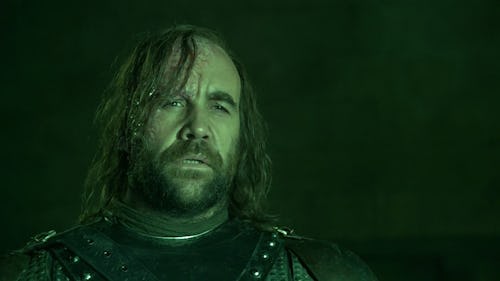
Do you have a favorite scene in “Blackwater”?
I loved blowing up the boat with the wildfire, injuring my old friend Liam Cunningham! Anything to do with archery was great too, especially the flaming arrows. Tyrion’s speech was phenomenal to direct, just having the chance to work with an actor as good as Peter [Dinklage]. The scenes he shares with Jerome [Flynn] as Bronn are all hilarious too. We did a good headshot in that episode because I wanted someone to get decapitated but not make it neat, like it’s always shown in films. We wanted his head to be sliced right through the middle, so we figured out a way of doing it and it looked really cool. There’s also a practical effect I loved where we dropped a rock on somebody’s head.
I can’t have you here and not talk about Dog Soldiers. It took six years from script to screen, I think. Were there many changes from your first draft to the final film?
It follows the same basic structure, and I went through 18 drafts before we filmed it. It’s hard to say because I haven’t read one of the old drafts in a while, but it’s fundamentally the same structure. The changes were about bringing more character to the individuals and their relationships with each other, improving the dialogue, and figuring out little character beats. Those tweaks all improved the film, adding layers to the structure that was already there.
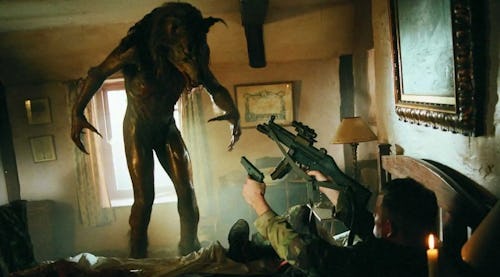
I read that Dog Soldiers 2 has been tied up in red tape and discussions with producers. Is there any clarity on where it stands?
I wish there was. I’ve a feeling it’s probably dead in the water because things have gone very quiet from the other side. I’m not giving up, though; there’s still a possibility. We’ve been trying to get it off the ground for the past six years. I’ve got a story hammered out, but I’ve not written the script yet because I want to know if we’re actually making it or not first. It’s a good idea, and I know Kevin McKidd (Cooper) is on board, but everything has gone very quiet and we don’t know why. We'll see. I can’t live my life waiting to see if it does happen. If it happens, it happens. It's always going to be a double-edged sword, though. The fans want it, and I’d love to give it to them, but if I make a mess of it, they’re not going to thank me. The most important thing is making sure that it lives up to the first one. That’s the hardest part.
I’ve read a few potential plot ideas that range from Cooper being institutionalized, a squad of U.S. soldiers that are actually werewolves, and an idea about werewolf DNA with cloning. Is there anything you can say about the idea you have for Dog Soldiers 2?
None of them are true! The thing about cloning was something that I was toying with a while ago, but it never amounted to anything. The idea of the American soldiers was something that the producers of the film were pursuing. They tried to get it made as Dog Soldiers: Fresh Meat. That never happened, and it’s a good thing too because it wasn’t a very good idea. The other one was an idea I toyed with a long time ago too. The new concept for the story is fresh and acknowledges that 20 years have passed. The story is set in a confined setting but a bigger one than the first film.
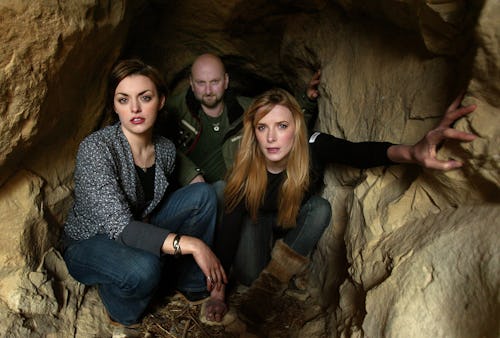
A film that Dog Soldiers shares a lot of DNA with is Predator, and you were close to directing Predators. What can you tell us about that process and would your take on the material have been much different?
As far as I’m aware, I got down to the last two directors. We were both invited separately to visit Texas and met with Robert Rodriguez. I saw his studio, went out for some barbecue, and he sounded me out. It was great but he hired the other guy; that’s the way it goes. I love the franchise, and I’d love to make a Predator movie sometime, the same way I’d like to do an Alien movie too. There’s a bunch of things I’d have done differently if I was directing Predators. All things considered, I’d rather start from scratch and do a fresh take on the Predator concept, rather than do anything that’s come before me.
I fully understand, and that’s why I liked Prey a lot. It’s almost like the creators finally realized you can drop the Predator into any time period or setting once there’s conflict and it will probably be cool.
Very much so. Could we do Predator on the beaches of Normandy? I’d love to see Predator in the desert. Put the Predator in Afghanistan or somewhere like that. That would be cool. Predators versus ninjas! That would do me.
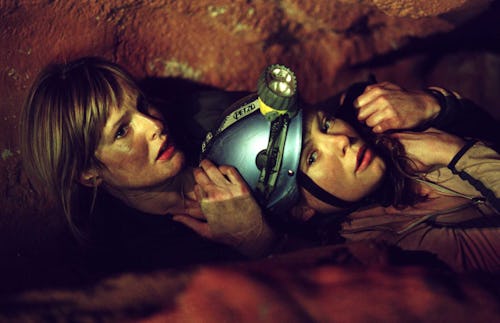
Let’s talk about The Descent for a bit. It’s nearly 20 years old and rightfully regarded as a modern horror classic. Have you seen its impact on other horrors since its release?
Definitely. I’ve seen a few films that tapped into it. Usually, it’s something to do with an infrared shot of a creature in the darkness. The most notable example is in Cloverfield. There’s a sequence in a tunnel where they’re looking through the infrared camera, it points to one of the girls, and we see a creature on the wall in the background. I’m not saying someone has ripped me off. It’s the very opposite because I see it as the biggest form of flattery. Plus, I do it all the time with my films.
With any script you’re writing, I’d imagine there’s a core image/scene or piece of dialogue that’s the seed of what you’re about to develop. How did you conceive of The Descent and what was that seed?
It wasn’t so much a scene as an overriding visual style. Once I decided to shoot it in a way where large portions of the screen were pitch black, it came alive. If you’re in a cave and not shining a torch at something, it’s going to be pitch black. I had this image of leaving a big section of the screen blacked out, but right down in the corner, there’s a little light or torch. The audience can’t comprehend the scale or threat of the scene until they start shining this light around. The audience also doesn’t know if the characters are in a tunnel or a massive space. The only light they had down there was what they had with them, which added to the claustrophobia. I figured that style out as I was writing the script. In fact, it shaped each character and their source of light because they needed to have something with them so the audience could see — a video camera, snap light, flare or a torch. I wrote it that way and color-coordinated each character. For example, the two sisters had green snap lights, Shauna had fire, another character had a flare. This meant we knew where each character was depending on what the light looked like.
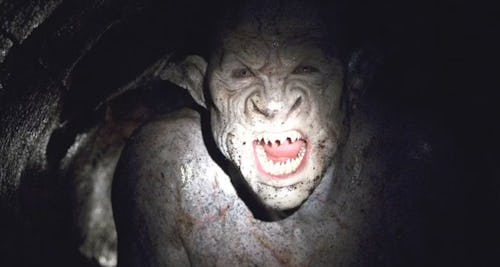
I re-watched it recently, and despite knowing what’s in store, I was still struck by how ferocious the last 20 minutes are. Can you talk about pacing in the final act?
I deliberately went for a slow build throughout the film because I knew things would only get really nasty in the last 20 minutes. Because I hadn’t overdone it at the beginning — opting for suspense, creepy tension and claustrophobia — it allowed me to go full throttle at the end without a breath. One of the girls gets killed and then you think, “Oh, I’m gonna get a breather now,” but the next character is killed straight away. I wanted to make it relentless and have the audience feel like they’re being hammered over the head with a frying pan. What was interesting is that I had a small discussion with a producer about that very idea. In the writing process, he said, “We need to have some excuse to cut away from the cave and see the outside world, just to give the audience some release.” I pushed back on that because we had the audience in the pressure cooker, just like the guys on the boat in Jaws or the ship in Alien.
As for your work on Westworld, I’m curious if the showrunners ever told you about the show’s ending when you were directing. Did you know the twist coming down the pipeline?
No, the plotline was all very top secret. They didn’t tell anybody about the split timeline. I figured it out halfway through directing an episode though. I asked them straight up, “Is this a different timeline?” They took me aside and said “Yes, it is, but don’t tell anyone!” They were keeping their cards close to their chest. There was just something in my bones that made me think it was a split timeline. I had a feeling they were trying to keep secrets too, which instantly made me wonder: “What’s this secret?” I was looking for clues and at some point, I picked up on it. What was strange about directing that episode is that a lot of Season 1 was created in the edit more than anything. I went into direct Episode 5, and when I saw the full series, stuff from the episode I directed was used in Episodes 3, 4, 6, and 7; it was spread out. Most of the scenes in Episode 5 were mine, but bits and pieces were used in other places. I think they cleverly fabricated Episode 7 with bits from other episodes too.
Looking forward, you’re a busy man with Duchess being released soon. Is there anything else you’re working on that you can tell us about?
Duchess is coming out in the U.S. at the start of September. I also shot a movie last year called Compulsion, which is like a Giallo erotic thriller. That got delayed by the strikes, but it's just finished; they were in Cannes selling that too.
I’ve spent the last few months writing a new project which was knocking around my head for 12 years. It’s a World War II alien-invasion film. When you pitch that, everyone thinks it’s Independence Day meets Saving Private Ryan. It’s not that at all — it’s more quirky and set in a small fishing village. Then again, it’s still full of crazy aliens and weird shit! Just with a slightly more condensed scale.
FTTT
0 Comments